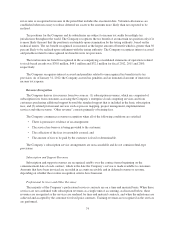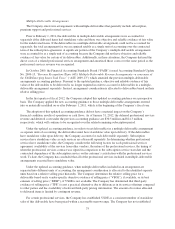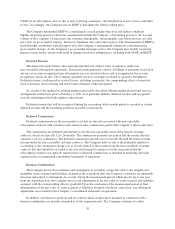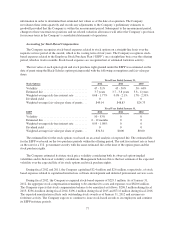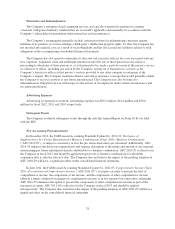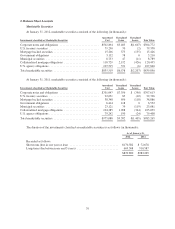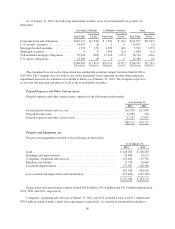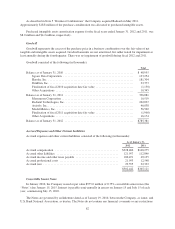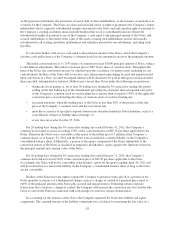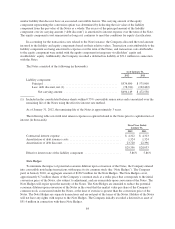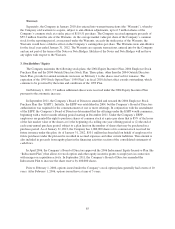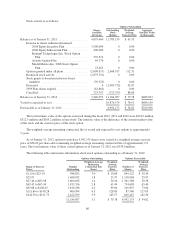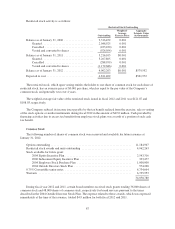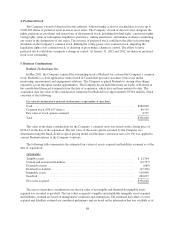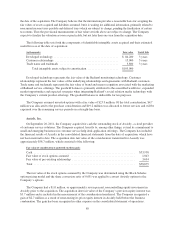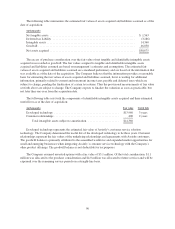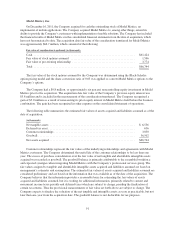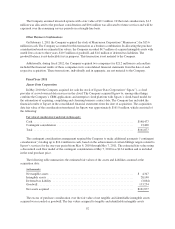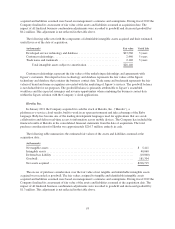Salesforce.com 2012 Annual Report Download - page 88
Download and view the complete annual report
Please find page 88 of the 2012 Salesforce.com annual report below. You can navigate through the pages in the report by either clicking on the pages listed below, or by using the keyword search tool below to find specific information within the annual report.
similar liability that does not have an associated convertible feature. The carrying amount of the equity
component representing the conversion option was determined by deducting the fair value of the liability
component from the par value of the Notes as a whole. The excess of the principal amount of the liability
component over its carrying amount (“debt discount”) is amortized to interest expense over the term of the Note.
The equity component is not remeasured as long as it continues to meet the conditions for equity classification.
In accounting for the transaction costs related to the Note issuance, the Company allocated the total amount
incurred to the liability and equity components based on their relative values. Transaction costs attributable to the
liability component are being amortized to expense over the term of the Notes, and transaction costs attributable
to the equity component were netted with the equity component in temporary stockholders’ equity and
stockholders’ equity. Additionally, the Company recorded a deferred tax liability of $51.1 million in connection
with the Notes.
The Notes consisted of the following (in thousands):
As of January 31,
2012 2011
Liability component:
Principal .................................................. $574,890 $ 575,000
Less: debt discount, net (1) ................................... (78,741) (102,462)
Net carrying amount .................................... $496,149 $ 472,538
(1) Included in the consolidated balance sheets within 0.75% convertible senior notes and is amortized over the
remaining life of the Notes using the effective interest rate method.
As of January 31, 2012, the remaining life of the Notes is approximately 3 years.
The following table sets forth total interest expense recognized related to the Notes prior to capitalization of
interest (in thousands):
Fiscal Year Ended
January 31,
2012 2011
Contractual interest expense ......................................... $ 4,312 $ 4,313
Amortization of debt issuance costs ................................... 1,324 1,324
Amortization of debt discount ........................................ 23,720 22,396
$29,356 $28,033
Effective interest rate of the liability component ......................... 5.86% 5.86%
Note Hedges
To minimize the impact of potential economic dilution upon conversion of the Notes, the Company entered
into convertible note hedge transactions with respect to its common stock (the “Note Hedges”). The Company
paid, in January 2010, an aggregate amount of $126.5 million for the Note Hedges. The Note Hedges cover,
approximately 6.7 million shares of the Company’s common stock at a strike price that corresponds to the initial
conversion price of the Notes, also subject to adjustment, and are exercisable upon conversion of the Notes. The
Note Hedges will expire upon the maturity of the Notes. The Note Hedges are intended to reduce the potential
economic dilution upon conversion of the Notes in the event that the market value per share of the Company’s
common stock, as measured under the Notes, at the time of exercise is greater than the conversion price of the
Notes. The Note Hedges are separate transactions and are not part of the terms of the Notes. Holders of the Notes
will not have any rights with respect to the Note Hedges. The Company initially recorded a deferred tax asset of
$51.4 million in connection with these Note Hedges.
84


